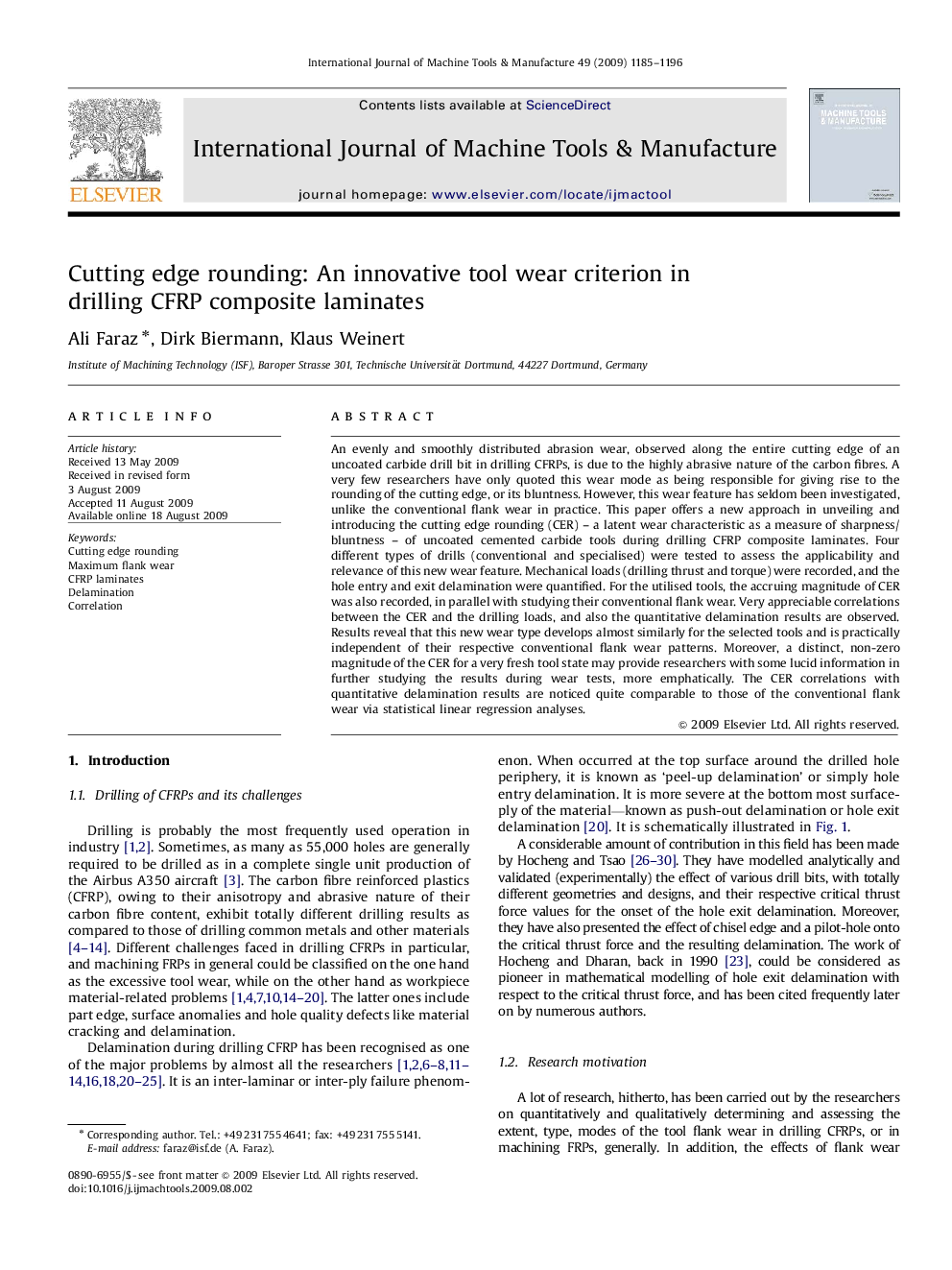| Article ID | Journal | Published Year | Pages | File Type |
|---|---|---|---|---|
| 780761 | International Journal of Machine Tools and Manufacture | 2009 | 12 Pages |
An evenly and smoothly distributed abrasion wear, observed along the entire cutting edge of an uncoated carbide drill bit in drilling CFRPs, is due to the highly abrasive nature of the carbon fibres. A very few researchers have only quoted this wear mode as being responsible for giving rise to the rounding of the cutting edge, or its bluntness. However, this wear feature has seldom been investigated, unlike the conventional flank wear in practice. This paper offers a new approach in unveiling and introducing the cutting edge rounding (CER) – a latent wear characteristic as a measure of sharpness/bluntness – of uncoated cemented carbide tools during drilling CFRP composite laminates. Four different types of drills (conventional and specialised) were tested to assess the applicability and relevance of this new wear feature. Mechanical loads (drilling thrust and torque) were recorded, and the hole entry and exit delamination were quantified. For the utilised tools, the accruing magnitude of CER was also recorded, in parallel with studying their conventional flank wear. Very appreciable correlations between the CER and the drilling loads, and also the quantitative delamination results are observed. Results reveal that this new wear type develops almost similarly for the selected tools and is practically independent of their respective conventional flank wear patterns. Moreover, a distinct, non-zero magnitude of the CER for a very fresh tool state may provide researchers with some lucid information in further studying the results during wear tests, more emphatically. The CER correlations with quantitative delamination results are noticed quite comparable to those of the conventional flank wear via statistical linear regression analyses.
